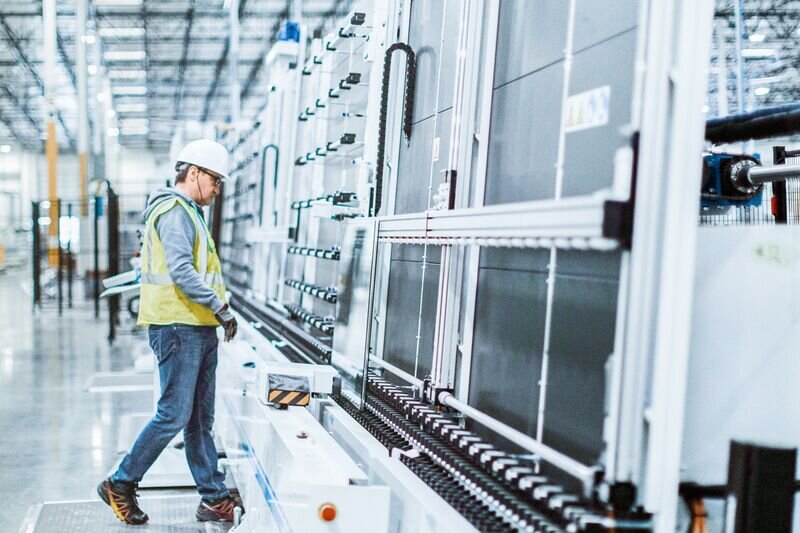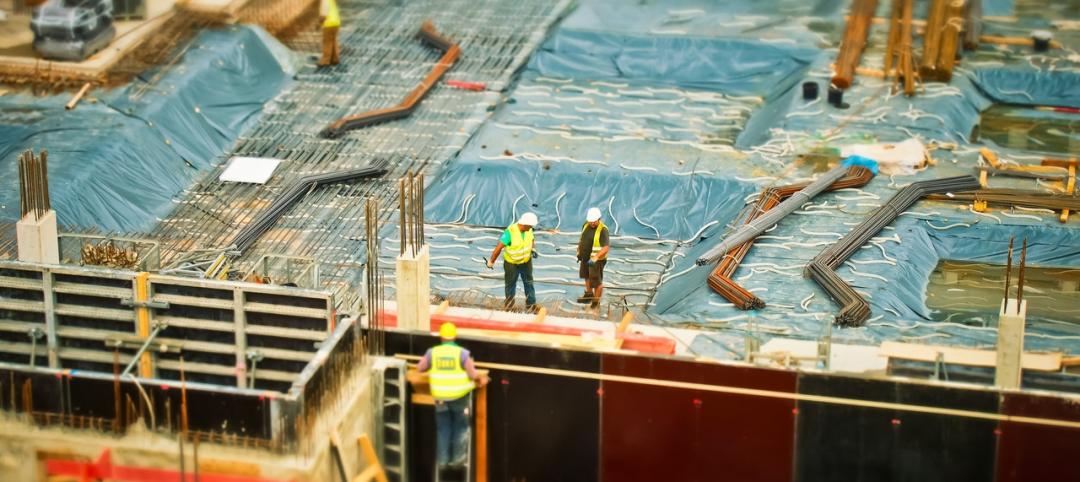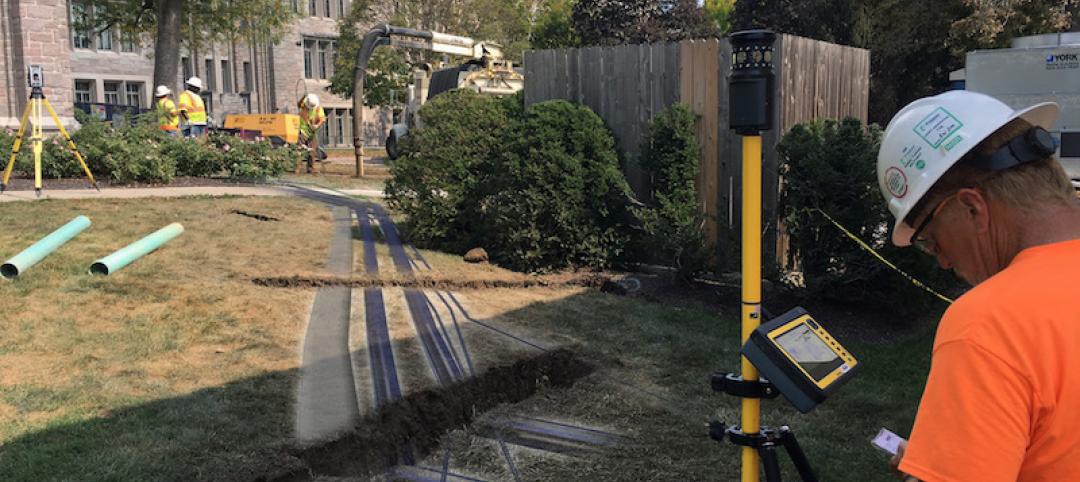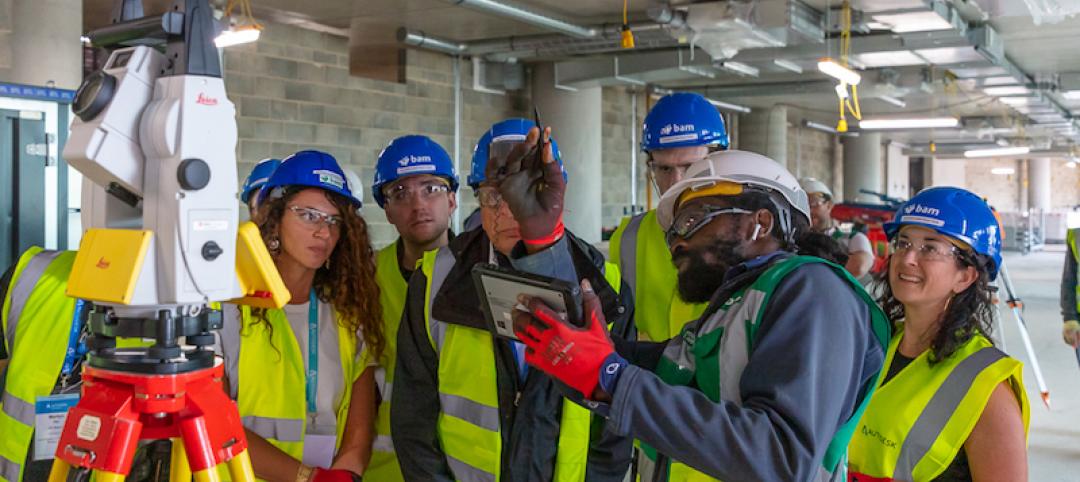The novel coronavirus pandemic has reshaped the construction industry, mostly positively in terms of operational efficiency and worker safety. It has also accelerated the growth—and funding for—construction technology, while creating a hierarchy for how broadly the industry has adopted these tools.
In its latest “State of Construction tech” report, released today, JLL aims to organize the wide range of technology options and measure how the pandemic has impacted their application by AEC firms and the clients on their projects.
Henry D’Esposito, JLL’s Construction Research Senior Analyst and the report’s author, asserts that, due to the pandemic, “three years of construction technology growth and adoption have been compressed into the past nine months.” Venture capital has continued to flow to startups, with funding levels about on par with the average for the past five years.
Construction tech kept jobsites open and projects running. It also allowed AEC firms whose employees were forced to work remotely to maintain their workflows. According to a recent U.S. Chamber of Commerce survey, 67% of the construction firms polled allowed employees to work from home. However, JLL notes that smaller firms were less likely to have systems in place.
Construction firms in general with fewer discretionary dollars were likelier to select proven tech solutions rather than take a risk on a less-mature startup.
WEARABLES IMPROVE WORKER SAFETY
ConTech enabled onsite execution in two ways, JLL observes: First, by creating opportunities to have fewer people on a jobsite. Second, by keeping anyone who is essential to being onsite as safe as possible.
“Technology solutions that have expanded this year include wearables and monitoring devices to ensure workers stay socially distanced and to allow contact tracing if any issues arise; and planning tools to enable optimal efficiency in staging and scheduling to ensure that teams stay separated,” says JLL.
Wearables were among the ConTech tools for which the impact of the pandemic on their usage was deemed “high” by JLL.
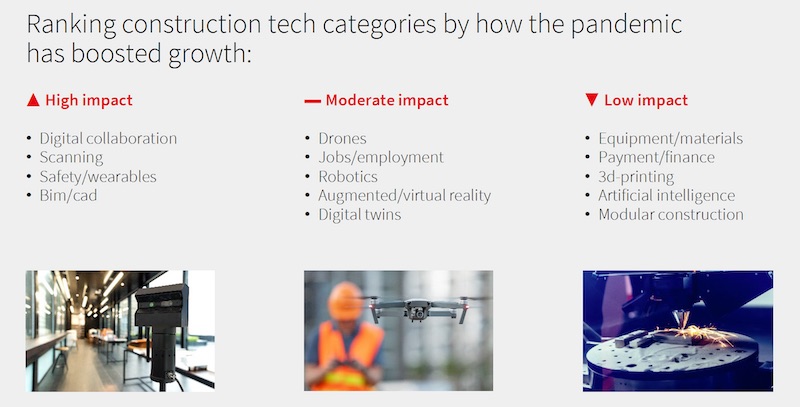
JLL has organized ConTech by its relative impact on construction, and whether the coronavirus affected that impact. Image: JLL
The report identifies the ConTech hierarchy into three groups:
•Foundational technologies that have become standard fare for AEC firms. These include BIM and CAD, digital twins, Artificial Intelligence (AI), and digital collaboration;
•Primary impact technologies that are gaining acceptance, such as scanning, drones, and modular construction; and
•Secondary impact technologies that are still in their early stages of adoption. Wearables falls into this category, as do 3D printing, robotics, AR/VR, and tools related to payments/finance, equipment/materials, and jobs/employment.
JLL believes that BIM and CAD, scanning, and digital collaboration each got a “pandemic boost,” whereas AI may have lost some steam. Scanning, for example, gained importance during the health crisis “as a way to replace additional eyes onsite, and as a substitute for in-person meetings and walkthroughs.” Prior to the pandemic, scanning was a more efficient and comprehensive way to collect data. But under regulations where a limited number of staff can be onsite at any time, “interior scanning has often become a necessity to ensure that all members of a project teams are on the same page, even if they cannot be onsite.”
ROBOTS AND 3D PRINTERS STILL HAVE A WAYS TO GO FOR INDUSTRY ACCEPTANCE
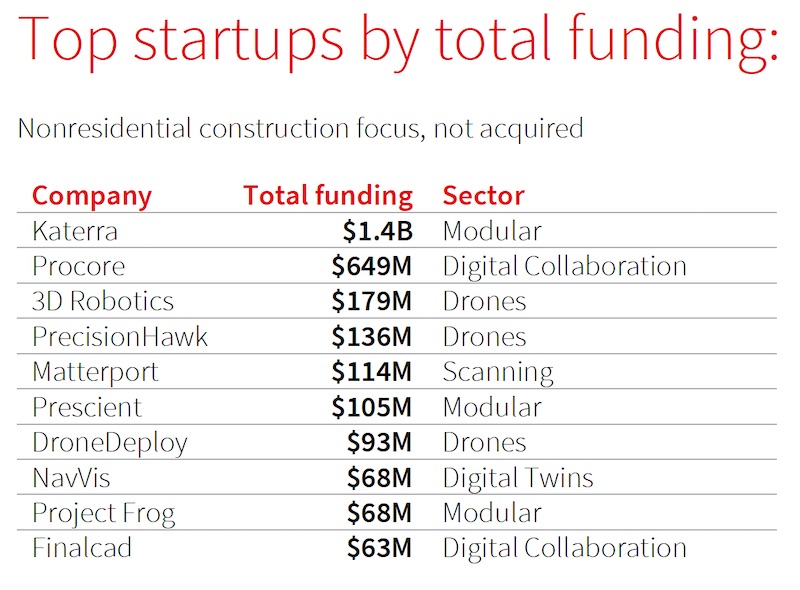
Venture capital funding for ConTech during 2020 was in line with levels over the past five years. Image: JLL
Drones, says JLL, got a moderate boost from the pandemic because “of their ability to do the work of multiple people, and to do so in a way that keeps people socially distanced.”
And while many AEC firms claim to be embracing modular construction for quicker project delivery, JLL finds that the impact of the pandemic hasn’t been much of a factor on leading more firms to this method. “On the positive side, modular manufacturing can be done in a controlled factory setting, with the ability for extensive preplanning to maintain social distancing without the unknowns of an active jobsite. On the negative side, modular construction remains an economically high-risk endeavor.”
The pandemic also has had mixed impact on other ConTech tools. Its effect on the adoption of 3D printing, for example, was low, says JLL, which predicts that the future of 3D printing is brighter for single-family home construction or certain military applications than for nonresidential construction.
JLL is a bit more sanguine about robotics, which got a moderate boost from the pandemic. “With the addition of AI, this sector is developing for more advanced tasks, including fully automated excavation or interior chalk lining.” Nevertheless, JLL expects robots to be used on a limited basis for pilot projects for at least the next few years.
Augmented and virtual reality are still in their early development stages, and both have the potential to become standard on construction projects. But, JLL cautions, “they will only work on projects with high adoption of other forms of tech that would be required for integration.”
Related Stories
AEC Tech | Jul 29, 2019
2019 Bluebeam Extreme Conference: Peer-to-Peer Learning at Scale
XCON 2019 to focus on collaborative partnerships and what works in digital construction
Multifamily Housing | Jul 23, 2019
Is prefab in your future?
The most important benefit of offsite construction, when done right, is reliability.
AEC Tech | Jul 15, 2019
Lack of standards hampers development of exoskeleton industry
Guidelines, common terminology, and testing methodology are needed, says expert.
AEC Tech | Jul 15, 2019
Investors eye startups focused on automating construction
Investors could reap big payoffs in an industry that experts say is ready for automation.
AEC Tech | Jul 12, 2019
A new Dodge-Viewpoint report gauges how well contractors gather and use jobsite data
Information is power, but are contractors collecting what they need to make better decisions?
| Jul 11, 2019
Pepper Construction is using 3D models to help identify underground utilities on jobsites
Overlaying new installs and site surveys add precision to the construction process.
AEC Tech | Jul 10, 2019
Blue Collar Labs launches Builder’s Almanac, an online construction technology evaluation platform
The free online resource aims to eliminate subjective bias from the contech software evaluation process.
AEC Tech | Jul 2, 2019
Living in a cloud: What nanotech means for architecture and the built environment
Could there come a time when buildings will become less about bricks and mortar and feel more like mists or fogs?
AEC Tech | Jun 28, 2019
In London, Autodesk homes in on construction management
The software goliath sounds the alarm about the urgent need for productivity improvements to address unbridled urbanization.
Giants 400 | Jun 26, 2019
How are the AEC Giants faring in the tech arms race?
About half (42%) say their firm is “on par” with their most-direct AEC competitors.


